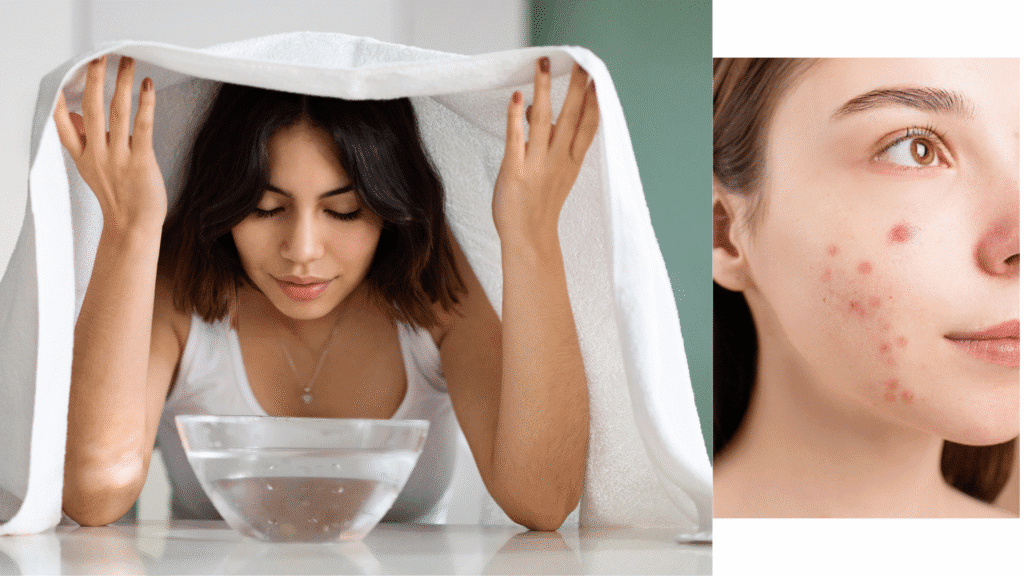
Facial steaming is often praised as a miracle remedy for clogged pores, blackheads, and oily skin. But if you suffer from acne or breakouts, is steaming actually helping your skin—or making it worse?
In this blog, we’ll break down the truth about steaming for acne: its benefits, hidden risks, and when to avoid it. Let’s find out if steaming is your skin’s friend or foe.
What Does Steaming Do to Your Skin?
Steaming uses moist heat to open up pores, increase blood circulation, and soften the skin’s surface. When done right, it can:
Loosen dirt, oil, and dead skin
Promote sweating, which may help unclog pores
Improve product absorption (like serums or masks)
Sounds great, right? But it’s not always beneficial for acne-prone skin.
Potential Benefits of Steaming for Mild Acne
If you have mild whiteheads or blackheads, occasional steaming might help by:
Softening clogged sebum
Making extractions safer and easier
Enhancing the effectiveness of exfoliants or face masks
Note: These benefits are temporary and should only be part of a full acne-care routine.
When Steaming Becomes a Bad Habit
While steaming sounds gentle and natural, it can worsen acne in many cases—especially if:
You have active, inflamed, or cystic acne
Your skin is sensitive, dry, or rosacea-prone
You steam too frequently or use very hot water
You don’t follow proper aftercare
Oversteaming can:
Irritate inflamed pimples
Damage the skin barrier, leading to more breakouts
Increase oil production as a rebound effect
Cause redness, dryness, or even burns
Dermatologist Insight: What to Do Instead
Instead of relying on steam, dermatologists often recommend:
Gentle cleansing with salicylic acid or benzoyl peroxide
Oil-free moisturizers and non-comedogenic products
Spot treatments with sulfur, niacinamide, or retinoids
Proper exfoliation once or twice a week (not after steaming)
Professional facials or chemical peels under expert care
When (and How) to Steam Safely
If your dermatologist approves, and you have non-inflammatory acne, you may use steam once in 10–15 days by:
Using clean, filtered water
Keeping your face at least 8–10 inches away from the steam source
Limiting sessions to 5–7 minutes only
Following up with a hydrating toner and moisturizer
Never steaming open wounds or active pustules
Final Verdict: Benefit or Bad Habit?
Good for occasional deep cleansing
Bad for daily use or inflamed acne conditions
So, while steaming might feel refreshing, it’s not a cure for acne—and can sometimes do more harm than good. For serious breakouts, it’s always best to consult a dermatologist.
Conclusion
Facial steaming isn’t inherently bad—but it’s not a magic solution for acne, either. Understanding your skin type and acne stage is crucial before trying any home remedy. At Skin Heal Solutions, our experts offer customized acne treatments using safe, effective, and science-backed methods.
Book a consultation today for clear, glowing, and acne-free skin—no guesswork, no damage.

